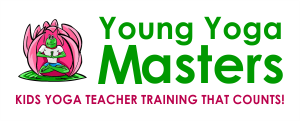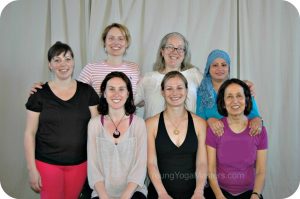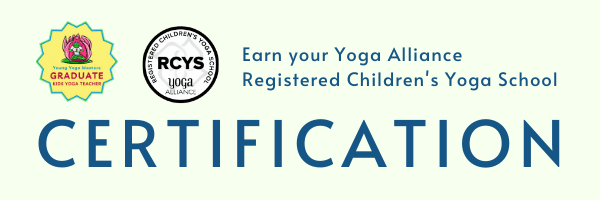Preparing for the Inclusive Yoga Kids Yoga module of our kids yoga teacher training means gathering my ribbons, stickers and foam noodles. Seeing these props gathered in front of me, I’m reminded of the many ways to engage children and how important wise planning is for a kids yoga class.
In this training, you’ll create Lesson Plan Case Studies and strategize ways to include children with all abilities in your classes. Here are three tips from our training that could make your classes a little more inclusive so everyone gets to play at yoga!
If you’d like to get formal training – please follow the link here and check out our early bird savings for the upcoming training.
1. All Abilities Yoga
Here’s what we did in our practicum Training when a girl with Cerebral Palsy attended. She used a walker/seat to support her and standing up and sitting down took her longer, was tiring, and made it hard for her to participate in the class.
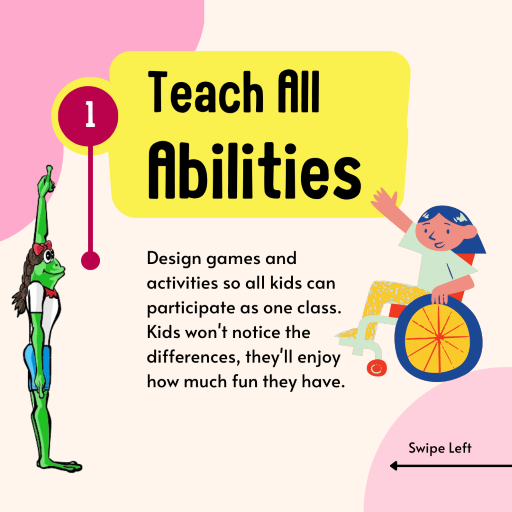
As often happens we didn’t know she was going to be there until we got to the class. But we had 5 more classes in the series so we did a case study of her needs and our lesson plans for future classes so she could participate fully. Here’s one example.
We typically play a mindfulness listening game using a variety of bells with the kids sitting on the floor, closing their eyes, and listening to identify which bell is being rung. For this activity, our first thought was to put out a chair so our friend could sit in a chair while we played.
But as we thought it through we could see how she would still feel separated from the group this way – she would be the only one sitting in the chair. There was no reason this activity had to take place on the yoga mats.
So we changed our plan to move the whole activity to a table and had everyone sitting in chairs.
The activity was set up before everyone arrived and ran smoothly, not one child ever thought that a special allowance had been made because of the chairs. What they did notice was how much fun they had.
This is just one way that you can plan your lesson for a particular child with a walker or chair, and keep it fun by moving everyone into chairs.
You can see how activities are equally fun no matter how you play them in this video:
2. Routines within the Yoga Class
Routines: Helpful for All, Essential for Some
When I talk about setting up routines in a yoga class, I liken it to TV show credits. As a kid, I remember watching the Brady Bunch till the very last note of the closing song was sung. Those opening and closing songs helped me emotionally process that my favourite show was starting, then finishing. The routine helped!
Routines within a class are helpful for all and essential for some. They reduce stress because they provide predictability and reassurance throughout your yoga time.
“Unpredictability = Risk”
The simple premise (unpredictability = risk) is that young people perceive the unpredictable as risky and threatening. For example, novel situations – such as new environments, a disruption in routine, or times when their teacher is away – are themselves the reasons that students escalate in their environment. In times of uncertainty, students can often display emotional dysregulation and increased fight-flight-freeze behaviours.”
p. 55, Creating Trauma-Informed Strengths-Based Classrooms, Tom Brunzell Ph.D., and Jacolyn Norrish Ph.D.
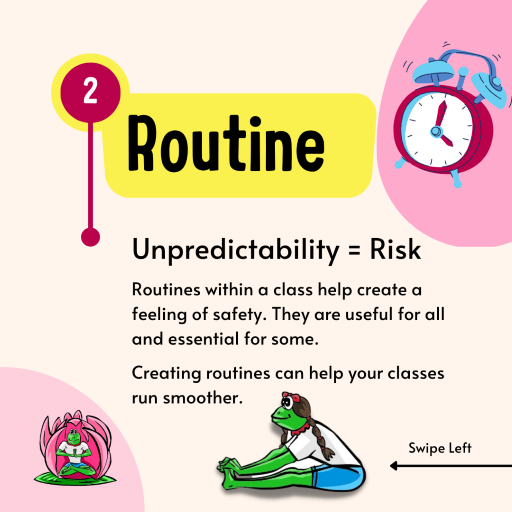
Adding routines can help your classes run smoother. Here are a few places routines can be used:
- an opening song (see the Hello Song I use in my preschool classes below)
- routinely doing 3 yoga breaths during or after a pose
- a routine to celebrate completing a pose or activity
- a closing transition or song
Don’t forget that for routines to work they should be the same in every class!
What routines do you follow without fail in every class? If you don’t have any, it may help to get some.
3. Representation Matters In Your Props
I created Yoga Man vs. The Stressor in 2009 because it was hard to find yoga materials that appealed to the older boys I taught. There were plenty of images of animals, fairies, and happy endings. But where were the action heroes that many of my students wanted to see?
When I developed the Frog Yoga Alphabet, I chose frogs to do the poses rather than children so that everyone could relate to the images.
And the strategic use of props can get more children engaged like the way bubbles help everyone figure out yoga breathing.
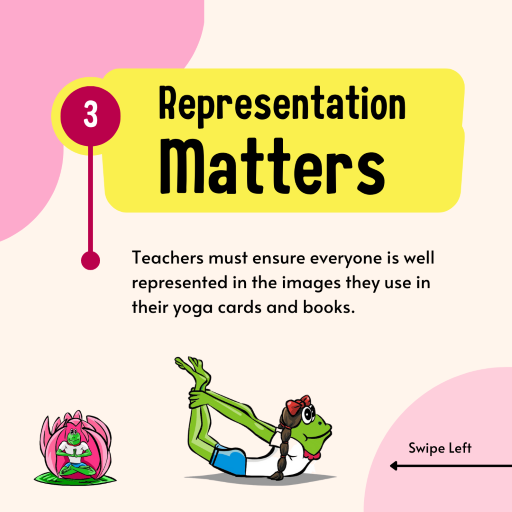
Fortunately, there are more inclusive resources available now. I would like to update the Yoga for Boys video I made to include more boys, not just my nephews. I’d like to include images of children wearing head coverings or using walkers doing yoga!
Out of convenience, people can get overlooked and feel like they don’t belong when they never see themselves represented. Teachers need to think about whether everyone is represented in the images they use in yoga class too.
Here’s our yoga for boys video that needs an update, the boys in this video are young men now so we are ready for new kids to fill our video:
Yoga Man does the sun salutation on colouring pages that kids can colour in the way they like.
If you find that your boys are not engaged in your yoga classes, I recommend learning more about Boy Culture from this article.
What are Your Favourite Strategies to Create an Inclusive Yoga Lesson Plan?
These are just a few of the many ways you can create an Inclusive Yoga Lesson plan. To go over them all we would need a whole weekend and that takes place in the Inclusive Yoga Kids Yoga Teacher Certification.
Register before March 25, 2023, and get 40% OFF by using the code KIDSYOGATEACHERSAVE40.
The code can be used sitewide for Self-paced, Live Zoom, and In-person teacher training.
